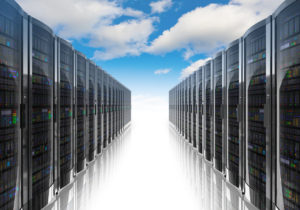
The Modernization Dilemma: Breaking the Myths of On-Premise Versus Cloud Storage

(Scanrail1/Shutterstock)
Several years into the cloud computing revolution, the general assumption in enterprises is that cloud storage is better storage. It can be easy to implement, eliminates much of the burden on IT departments, and can be more cost-effective. These benefits certainly exist – but once enterprises begin to build big data sets, the benefits of the cloud can dwindle.
This is what we call the modernization dilemma: If you want to deliver greater performance and efficiency as you manage critical applications and data, should you seek out the cloud? Or does your enterprise have concerns about transferring control and management of IT infrastructure to a cloud service provider because you’re worried about security or access – in which case on-premise data storage may be better option? Thanks to new developments in storage, the on-premise option may actually prove to be less expensive and offer more control, depending on business needs.
Cost of Storage
Thanks to advances in storage technology, such as the use of flash, on-premise storage has caught up to the cloud in terms of cost-effectiveness. A recent report compared the cost of using flash storage arrays versus a public cloud product, both with a performance of 180,000 IOPS per month. It looked at the cost of each storage option to serve two different consumption models: steady linear growth, where storage grows in a straight trajectory of 8.28 TB per month, and logarithmic growth, where storage grows at the rate of 3 percent per month.
For the cloud product, using the example of storage growing linearly, costs started at $20,000 a month and grew to $120,000 a month, for a total of almost $2.9 million. The overall cost was lower for storage growing in a logarithmic fashion — $1.4 million over 36 months. In contrast, the monthly costs for leasing flash storage arrays remained steady at $30,000 per month, for a total of slightly over $1 million. The flash-arrays option was between 29 percent and 63 percent less costly than the cloud solution.
The cost comparison highlights a couple of key points in the cloud versus premise storage discussion. First of all, it belies the assumption that cloud storage is more affordable. The cloud may certainly be competitive on a cost basis for enterprises that simply need to archive a lot of data for a long time. But if the business needs to access, process, and analyze the data for mission-critical business programs, then the cost to achieve that real-time access and processing renders the cloud more costly.
Maintenance Mayhem
Another point for discussion: The cost comparison shows that the perception that flash storage is expensive is clearly outdated, since innovations in flash technology have lowered storage costs.
Besides the fact that the costs have decreased for the flash storage systems themselves, they require less maintenance by IT teams. Traditional HDD storage systems usually require significant time investments for optimal performance – while flash systems, with low latency, don’t require such tuning. Because flash storage systems don’t have moving parts, power consumption is less, which also helps save money.
Control and Governance
Depending on the business, it may be desirable to maintain control over data and manage security on-premise, rather than cede control to a cloud provider. If an issue does occur, such as an online attack or the failure of a mission-critical application, IT staff will have far greater access and transparency into data storage systems in order to perform diagnostics and repair.
On-premise flash storage can also give enterprises more control over the performance of their data. When it comes to performance of cloud solutions, you’re limited to the vendor’s benchmarks. However, improvements in flash storage provide performance that’s between 20 times and 100 times better than traditional HDD storage – another mark in flash storage’s favor.
If your enterprise is faced with the task of storing and analyzing ever-expanding volumes of data, the cloud is no longer your only choice. On-premise storage has come a long way since the days of HDD, and it’s to your organization’s benefit to compare cloud to on-premise data storage to see which options net you the most control at the lowest cost.
About the author: Rajesh Nair is co-founder and CTO of Tegile Systems. Rajesh  brings over 19 years of engineering and product development experience to Tegile. Rajesh leads technology and product development of Tegile’s flash storage portfolio. Prior to Tegile, Rajesh was CTO and Vice President of Engineering at Perfigo, a leading network admission control solutions company that was acquired by Cisco Systems (NASDAQ: CSCO). Post acquisition he continued to lead the development of Cisco’s NAC Appliance products. Prior to Perfigo, Rajesh held senior management positions in engineering at Brience and Sun Microsystems.
brings over 19 years of engineering and product development experience to Tegile. Rajesh leads technology and product development of Tegile’s flash storage portfolio. Prior to Tegile, Rajesh was CTO and Vice President of Engineering at Perfigo, a leading network admission control solutions company that was acquired by Cisco Systems (NASDAQ: CSCO). Post acquisition he continued to lead the development of Cisco’s NAC Appliance products. Prior to Perfigo, Rajesh held senior management positions in engineering at Brience and Sun Microsystems.































